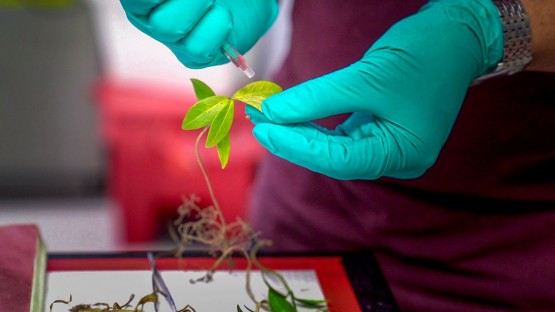Nanoscale sensors measure elusive water levels in leaves | Cornell ChronicleWater regulation in leaves is vital to a plant’s health, affecting...
Published on by Water Network Research, Official research team of The Water Network

Water regulation in leaves is vital to a plant’s health, affecting its growth and yield, disease susceptibility and drought resistance.
A breakthrough technology developed by Cornell researchers uses nanoscale sensors and fiber optics to measure water status just inside a leaf’s surface, where water in plants is most actively managed.
The engineering feat provides a minimally invasive research tool that will greatly advance the understanding of basic plant biology, and opens the door for breeding more drought-resistant crops. The technology could eventually be adapted for use as an agronomic tool for measuring water status in crops in real time.
microscopic pic of plant leaf
Piyush Jain/Provided
Fluorescent dyes in this maize plant leaf show epidermal cell walls (blue), chloroplasts (green) and hydrogel nanoreporters (AquaDust) that reveal water potential (red).
The study in maize plants, “A Minimally Disruptive Method for Measuring Water Potential In-Planta Using Hydrogel Nanoreporters,” published June 1 in the Proceedings of the National Academy of Sciences.
“One of the goals is to have tools that allow internal biology to be expressed out into the world in a way that can be captured and digitized,” said senior author Abraham Stroock, the Gordon L. Dibble ’50 Professor in the Smith School of Chemical and Biomolecular Engineering in the College of Engineering.
Attached link
https://news.cornell.edu/stories/2021/06/nanoscale-sensors-measure-elusive-water-levels-leavesTaxonomy
- Nano Materials
- Nanotechnology
- Nanotechnology